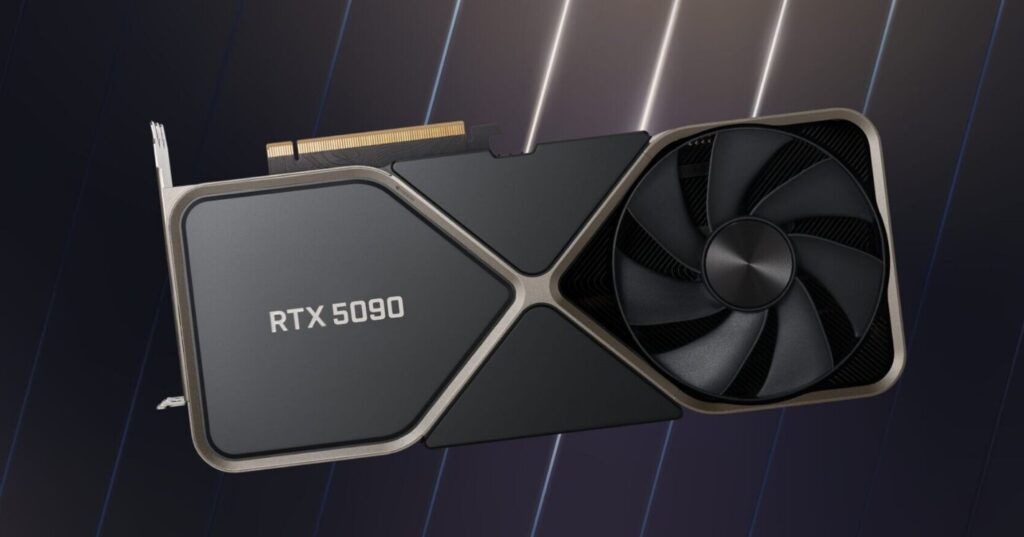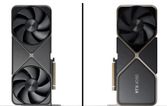
NVIDIA’s Blackwell GB202 GPU: The Powerhouse Behind the GeForce RTX 5090
NVIDIA is setting the stage for its next-generation gaming flagship, the GeForce RTX 5090, powered by the massive Blackwell GB202 GPU. With a significant 22% increase in die size compared to the RTX 4090, the RTX 5090 promises unparalleled performance gains for gamers and creators alike.
The Blackwell GB202 GPU represents a leap forward in GPU technology, leveraging TSMC’s advanced 5nm process node. With its larger size and enhanced architecture, this chip is poised to redefine the limits of gaming graphics.

Larger Die Size for Next-Level Performance
Reports indicate that the Blackwell GB202 GPU will measure approximately 24x31mm, totaling an impressive 744mm² die size. Additionally, the GPU package is expected to measure 63x65mm, equating to 3528mm². For comparison, the RTX 4090’s AD102 GPU featured a 609mm² die and a 2601mm² package, making the GB202 22% larger in die size and 35% larger in packaging area.
Despite its increased dimensions, the GB202 remains smaller than NVIDIA’s older Turing TU102 chip, which measured 754mm². This efficient design underscores NVIDIA’s focus on performance and scalability while maintaining thermal efficiency.
RTX 5090: Packed with High-End Features
The NVIDIA GeForce RTX 5090 will serve as the crown jewel of the RTX 50 series, boasting cutting-edge specifications designed to set a new benchmark in gaming performance.
Key Specifications of the GeForce RTX 5090:
- GPU Core: Blackwell GB202-300-A1 with 170 SMs enabled out of 192, housing 21,760 CUDA cores (an 11.4% reduction from the full die).
- Memory: 32GB of GDDR7 VRAM running on a 512-bit bus at 28 Gbps, delivering a total bandwidth of 1792 GB/s.
- Cache and Compression: Enhanced L3 cache and advanced memory compression for improved efficiency.
- Power: Rated at 600W TBP, ensuring headroom for demanding applications while actual gaming power usage remains optimized.
The RTX 5090 will likely include a 2-slot cooling solution for its Founders Edition model, ensuring efficient heat dissipation even under heavy workloads.
Enhanced Architecture with Blackwell

The Blackwell architecture marks a significant improvement over the Ada Lovelace generation, offering better IPC (instructions per clock) and more efficient ray tracing (RT) cores. These advancements position the RTX 5090 as the go-to GPU for gamers seeking the ultimate performance in 4K gaming and beyond.
Memory Enhancements and Gaming Performance
With 32GB of GDDR7 memory, the RTX 5090 doubles the memory capacity of its predecessor, the RTX 4090. This upgrade, paired with a wider 512-bit bus and faster memory speeds, ensures the GPU can handle next-gen gaming textures and workloads with ease.
The improved L3 cache and compression technologies further boost memory efficiency, ensuring that even the most demanding games and applications run seamlessly.
When to Expect the RTX 5090?
NVIDIA is expected to unveil the GeForce RTX 5090 at CES 2025, offering a glimpse into the future of gaming technology. Stay tuned for more details as the launch date approaches.
NVIDIA GeForce RTX 50 Series: Preliminary Specs Overview
| Graphics Card Name | NVIDIA RTX 5090 | NVIDIA RTX 5080 | NVIDIA RTX 5070 | NVIDIA RTX 5060 |
|---|---|---|---|---|
| GPU Name | Blackwell GB202-300 | Blackwell GB203-400 | Blackwell GB205 | Blackwell GB206? |
| GPU SMs | 170 (192 Full) | 84 (84 Full) | TBD | TBD |
| GPU Cores | 21,760 (+33%) | 10,752 (+11%) | TBD | TBD |
| Memory Capacity | 32GB GDDR7 (+33%) | 16GB GDDR7 (0%) | 12GB GDDR7 | TBD |
| Memory Bus | 512-bit (+33%) | 256-bit (0%) | 192-bit (0%) | 128-bit? (0%) |
| Memory Speed | 28 Gbps | 32 Gbps | 28 Gbps | 28 Gbps? |
| Bandwidth | 1792 GB/s | 1024 GB/s | 672 GB/s | 448 GB/s |
| TBP | 600W (+33%) | 400W (+25%) | 250W (+14%) | TBD |








By Andrej Kovacevic
Updated on 23rd November 2024